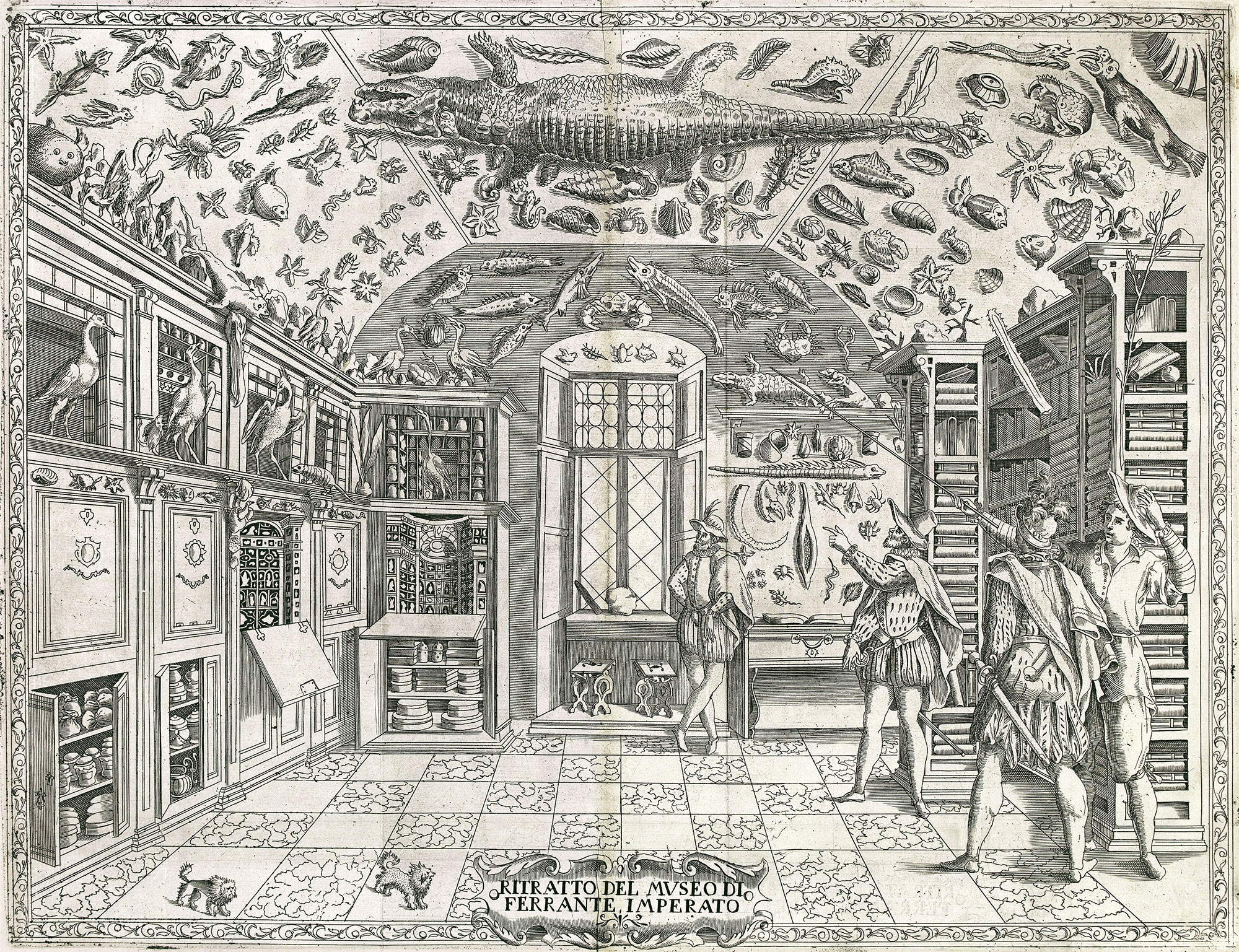Cabinets of Curiosities - As Curious as Ever
Cabinets of curiosities (which according to Wikipedia are also known as Kunstkabinett, Kunstkammer, Wunderkammer, Cabinets of Wonder, and wonder-rooms) are collections of extraordinary objects which, in various forms and formats through the centuries, have inspired wonder and the interpretation and re-interpretation of the world. Since the Renaissance, scholars and noblemen collected valuable or unusual objects for study and entertainment. Marvelling at the bounty of nature and the heights of human skill, they sought to rationalise and understand the world, driven by the belief that all things are related to each other. The diverse objects in the cabinets of curiosities represented a microcosm of the world and allowed the top echelon of society to study the world by viewing the objects in close proximity to each other and making unexpected connections between them. Initially displayed in a single cabinet, the collections of curiosities eventually grew into entire rooms filled with cabinets having a dizzying amount of ornate compartments and hidden sub-compartments.
Fold-out engraving from Ferrante Imperato's Dell'Historia Naturale (Naples 1599), the earliest illustration of a natural history cabinet.
As the collections grew, a classification system was developed based on the broad categories of artificialia, scientifica, exotica, and naturalia - although not every collection displayed all four, as shown by Ferrante Imperato's Dell'Historia Naturale's engraving of a natural history cabinet. Broadly speaking, artificialia referred to man-made objects showcasing skills in applied and fine art; scientifica encompassed instruments for the understanding and quantification of the world (such as astrolabes, compasses and globes); exotica covered curious objects from foreign lands; and naturalia focused on the marvels of nature, such as the obligatory stuffed alligator suspended from the ceiling, shells, various plants and minerals, and even an occasional unicorn horn thought to possess magical qualities. (A slight digression about the unicorns. Turns out the horns were actually the tusks of narwhals, the mid-sized Arctic whales who are the unicorns of the sea. There is magic in it after all.)
The artistic representations of cabinets of curiosities often show objects from each classification category, including fine art and sculpture, shells, measuring instruments, dried or stuffed animals, and exotic foreign artefacts and coins.
Frans Francken's Kunstkammer, 1636
Subjects treating important themes, such as Brueghel and Rubens' Allegory of Sight and Van Kessel's Allegory of Europe, were set within a cabinet of curiosities which itself was an allegory of wonder, knowledge, and skill.
Jan Brueghel the Elder and Peter Paul Rubens, Allegory of Sight, 1617, Museo del Prado
Jan Van Kessel, Allegory of Europe, 1670, De Jonckheere Gallery (photograph taken by author at Frieze Masters 2015)
Jan Van Kessel, Detail
Jan Van Kessel, Detail
Jan Van Kessel, Detail
Cabinets of curiosities are of course the precursors of contemporary museums. Using a more sophisticated classification system, museums are still broadly organised along the lines of artificialia, scientifica, exotica, and naturalia. Consider, for example, London's National Gallery, the Science Museum, British Museum, and the Natural History Museum.
However, cabinets of curiosities are not merely a concept of the past that has been replaced by museums. The thought-invoking collections of marvels are still very much a part of contemporary culture as we continue to make sense of the world. On the opposite end of the spectrum from traditional museums, for example, is the Viktor Wynd Museum of Curiosities, Art and Natural History in London (www.thelasttuesdaysociety.org) which exhibits occult drawings, dodo bones, a vast art collection, and a sarcophagus-cum-dining table containing a 19th century human skeleton. In its introductory statement, the museum promises to "present an incoherent vision of the world displayed through wonder enclosed within a tiny space" with no attempt at classification because the collection is "a mirror to a world so suffused with miracles and beauty that any attempt at categorization is bound to fail." Don't let the Renaissance Men hear that, but the lack of interpretation is an interpretation in itself.
Art fairs are another contemporary example of cabinets of curiosity on a grand scale. Compartmentalised into temporary rooms loosely categorised by each dealer's collecting focus, art fairs showcase a vast and diverse collection of art, furniture, and international memorabilia under one roof, inspiring new ideas and associations between objects.
LAPADA Arts and Antiques Fair, London
Hong Kong International Art Fair
The Cabinet of Curiosities recently took centre stage at the "Alexander McQueen: Savage Beauty" exhibition housed at the Met in New York and at the V&A in London and exploring the iconic fashion designer's creativity and sources of inspiration.
Cabinet of Curiosities from Alexander McQueen: Savage Beauty Exhibition. Image from http://www.designcurial.com/news/review---alexander-mcqueen-savage-beauty
Our homes, where we display an array of objects representing our tastes and interests (including souvenirs collected while travelling, shells picked up on distant shores, and art indicative of our sophisticated or quirky personalities) are in and of themselves cabinets of curiosity.
Social media is another mega-source of cabinets of curiosities. Pinterest, Instagram, Tumbler, and Twitter offer their own micro universes of marvels, each user's account presenting a separate cabinet of loosely associated curiosities compiled according to the user's interests and unique interpretation of the interconnection between the images.
One of the Haughton Fairs Pinterest Boards for The International Show, New York, 2015, highlighting works inspired by the purity and power found in nature. Image courtesy of Pinterest.
Although not adhering to a specific categorisation scheme, social media posts are a mirror of the contemporary world and its tastes, trends, interests, and thoughts. Taking this analogy even further, the Internet as a whole can be viewed as one gigantic cabinet of curiosities. And why not? Let's face it, curiosities are fun. They make us think. And when gathered together, you never know what extraordinary interconnections they can inspire.












